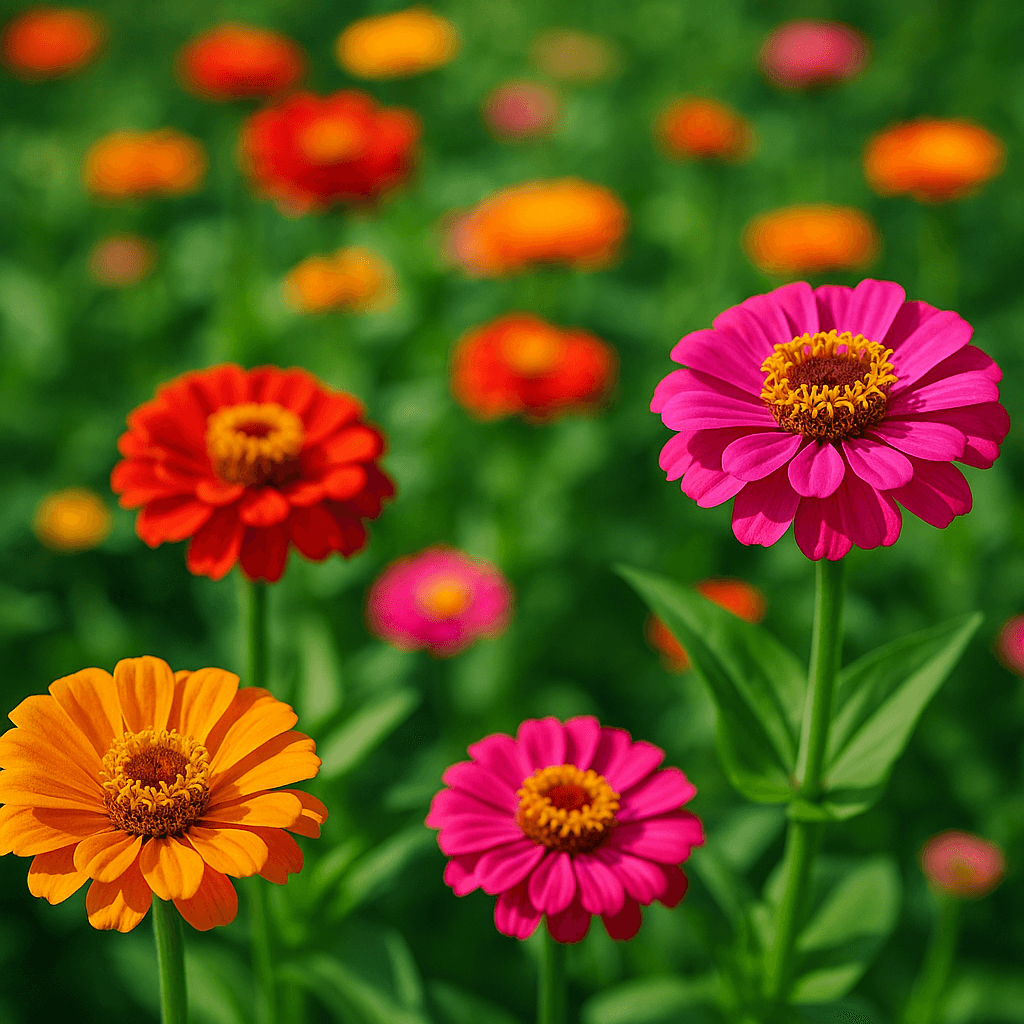Zinnia: The Colorful Bee Attractor for Your Garden
- Posted on
- By Annelies
- 0

Discover the Zinnia: a colorful summer flower that attracts bees and butterflies. Learn how to sow, care for, and use Zinnias for a vibrant, blooming garden.
Zinnia: The Colorful Bee Attractor for Your Garden
Zinnias are known for their vibrant colors, abundant blooms, and strong appeal to pollinating insects. These cheerful flowers brighten up any garden and are a paradise for bees and butterflies. In this blog, you will learn everything about Zinnia—from its origins to sowing, care, and interesting facts.
What is a Zinnia?
Zinnia belongs to the Asteraceae family (composite family) and includes about 20 different species. Most Zinnias grown in the Netherlands and Belgium are annuals. Although originally from Central and South America, these flowers also thrive well in our climate—provided you sow them after the last frost and choose a sunny spot.
Each species has unique characteristics. The flowers vary in height from 15 cm to 1 meter and in shape from simple daisy-like blooms to dome-shaped, dahlia-like flowers. What they share? Their cheerful colors and irresistible attraction to insects.
When and Where to Sow Zinnia?
There are many types of Zinnia, but some are particularly popular in ornamental gardens:
-
Zinnia elegans (common Zinnia)
The most well-known species, available in various colors and flower forms. Varieties such as Dahlia-flowered, Giants of California, and Thumbelina belong here. -
Zinnia angustifolia (narrow-leaved Zinnia)
Fine-leaved species with small flowers resembling daisies. Often in shades of yellow, orange, or red.. -
Zinnia haageana (Desert Zinnia)
Compact plant with a striking flower center and warm colors. Ideal for smaller gardens or pots.
When and Where to Sow Zinnia?
Zinnias are true sun lovers. Choose a sunny spot in your garden with at least 6 to 8 hours of sunlight per day. Sow outdoors from May to June, once the risk of frost has passed. Want to start earlier? Sow indoors or under glass and transplant later.
Sowing in 5 Easy Steps:
-
Choose a sunny spot with well-draining soil.
-
Loosen the soil to a depth of 15–20 cm.
-
Sow seeds at a depth of 0.5 to 1 cm.
-
Keep the soil moist during germination.
-
Thin seedlings and regularly remove wilted flowers for prolonged blooming.
Zinnias typically bloom from June to October—a months-long celebration of color in your garden.
How to Care for Zinnia?
Zinnias are relatively low maintenance, but good care ensures even richer blooms:
-
Water when the topsoil feels dry.
-
Remove dead flowers to encourage new blooms.
-
Light fertilization is sufficient.
-
Support tall varieties with stakes if needed.
-
Prevent diseases by ensuring good air circulation and checking for aphids or powdery mildew.
Why Plant Zinnias?
Zinnias are not only a feast for the eyes but also very versatile:
- Ideal for bees and butterflies
- Suitable as cut flowers and dried flowers
- Long blooming season from June to October
- Beautiful in borders, pots, and wildflower meadows
Fun Facts About Zinnia
-
Named after the German botanist Johann Gottfried Zinn.
-
Was once the official state flower of Indiana, USA.
-
Symbolizes friendship, devotion, and remembrance in the language of flowers.
-
Their sturdy stems make them perfect for summer bouquets.
-
Narrow-leaved Zinnias are popular in dried flower arrangements.
-
Zinnia is a true adapter and grows worldwide in diverse climates, from warm sunny regions to temperate zones, as long as it receives enough light and warmth.
Order Your Zinnia Easily Online
Choose your favorites and transform your garden into a vibrant sea of flowers—bringing joy to you and nature alike.
View our Zinnia selection in the webshop.

Comments
Be the first to comment...